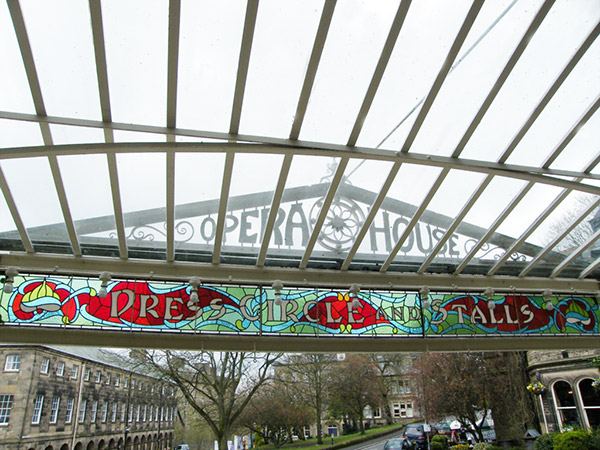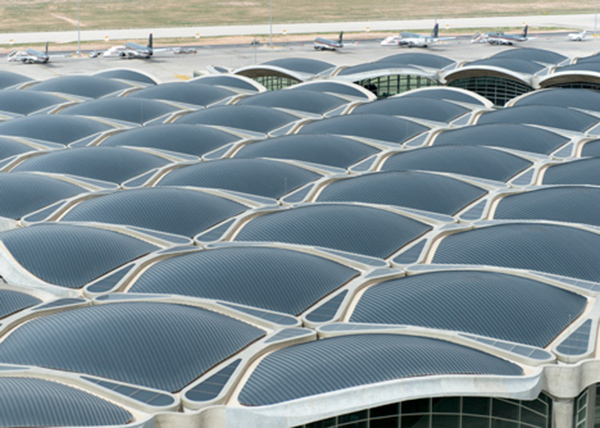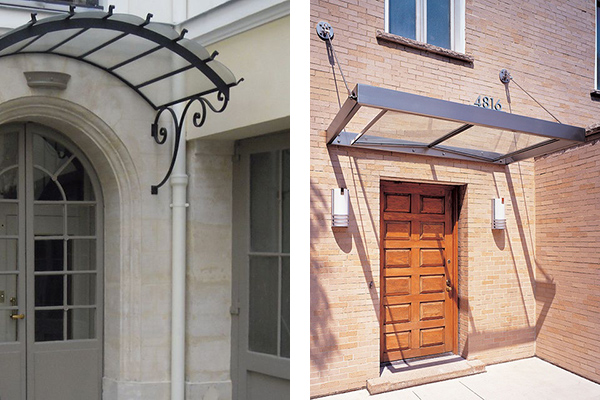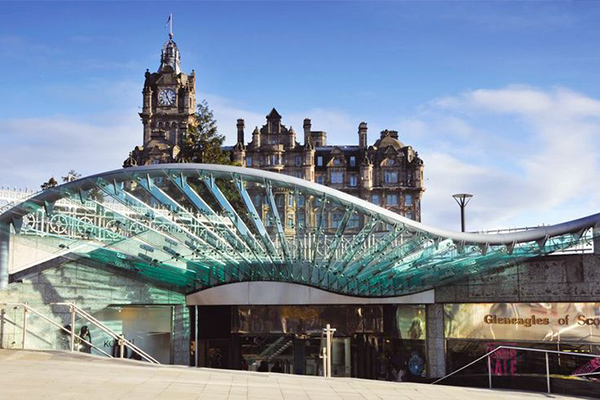The Victorians knew how to use canopies to full effect, think of Crystal Palace, and today canopies are enjoying a similar resurgence and are being specifed on a large scale, including airports. We look at some of the favourites.
The term canopy commonly refers to large structures placed over the entrance to many public buildings such as theatres, hotels, schools or businesses.
Both marquees and canopies have gained popularity during the 19th and 20th centuries, when the size and prominence of the signs associated with them also grew.
Historically, materials commonly used in marquee or canopy construction were steel, bronze, copper, and aluminium. They often also possessed elaborately painted patterns, with decorative details achieved from pressed sheet metal.
Victorian favourites
The Victorians were big fans of these overarching roofs and there is a stunning example of how Southport became the capital of the canopies. Iron and glass creations were put up by shopkeepers all down Lord Street in the town, creating a glass triumph which looked like an arcade that you might see today. The result was a sense of unity in diversity, with each company trying to outdo the other to produce the most elaborate designs to attract customers as well as prestige.
A canopy on the biggest ever scale was dreamt up by the designer for the Crystal Palace, Joseph Paxton. Paxton’s plan was for a iron and glass arcade or big canopy, which would form an uninterrupted covered space of 10 miles around central London and was to be known as the ‘Great Victorian Way’.
Despite this project literally never getting off the ground, the idea of using glass and iron for covered areas didn’t disappear. Although there were no glacial delights in quite the same scale as Paxton, the idea of having a covered area to protect people from the weather and make an impact on the street was a useful concept.
Entering the 1930s marquees and canopies came in increasingly elaborate designs, often displaying large letters to advertise wares. These structural specialities became landmarks in public areas and helped ensure each business was different than the last on the street.
Blackfriars Railway Bridge solar canopy
One of the most stand out canopy constructions recently is covering, you might say, all bases atop Blackfriars Railway Bridge in London. The covered construction has 4,400 photovoltaic panels covering an area estimated to be the size of 23 tennis courts. As well as a being a notable feature, the solar canopy generates 900,000 kWh of electricity annually for the nearby station.
Planning law definition of canopy
According to planning laws today a canopy is defined as a light roof-like structure, supported by the exterior wall of a building and on columns or wholly on columns, consisting of a fixed or movable frame covered with approved cloth, plastic or metal, extending over entrance doorways only, with the purpose of providing protection from sun and rain and embellishment of the façade.
Tessellated roof canopy comprising a series of shallow concrete domes at Norman Foster’s Queen Alia airport
Stainless steel canopies
One of the most popular materials for the construction of canopies is steel, due to it being strong and robust. It can also be finished with various products and treatments such as galvanising for ultimate corrosion protection from the elements. The galvanising itself is a dull silver finish and is particularly suited to coastal areas to withstand the harsher conditions. The steelwork can also be powder coated to a variety of colour finishes and the metal can be treated in all kinds of different ways for the desired texture and effect.
Canopy styles
The style of roof that is selected for a canopy is a very important, as this is the most stand-out feature that people will notice about it in the street scene. Each roof style has its own unique features, some are designed to fit in with existing buildings, and others are a state of the art design to make a canopy stand out.
PET (Polyethylene terephthalate) roof panels are a popular choice for canopies due to their sun protection and the fact they are long lasting and do not yellow. They are easy to fit and also easily maintained. Brightening the finish can be done with clear, opaque and smoked examples.
Polycarbonate roof panels are less flexible. Panels can only be cut to certain sizes, and don’t work with all styles of roof. The traditional idea of glass as a mini Crystal Palace theme is still a popular choice. Glass roof panels add a high quality finish and can be crystal clear or have a smoked finish.
The style of roof chosen for your canopy can really make an impact. A single pitch – or one slope roof is a popular choice, its simple design will fit in with almost any building. Curved roofs are a more modern design, allowing for larger more circular shaped options. Mono curved roof canopies stand out when fixed up against a contemporary building and will make any entrance more dramatic.
Finally the wave roof is one of the most stand out designs, the sweeping roof style looks great and also ensures all rain water drains off correctly. If dealing with an older building apex-style canopies are usually suitable to blend in with existing apex roofs.



